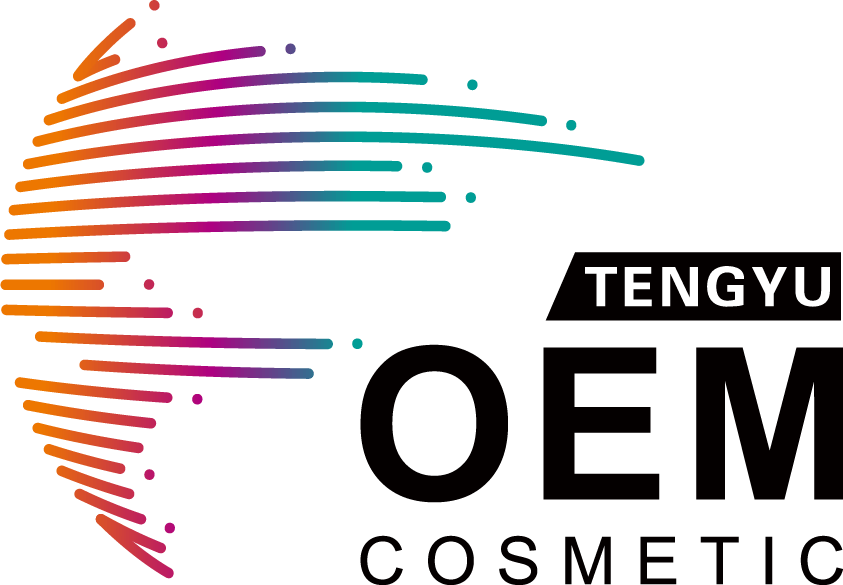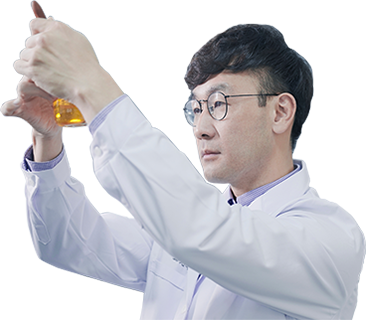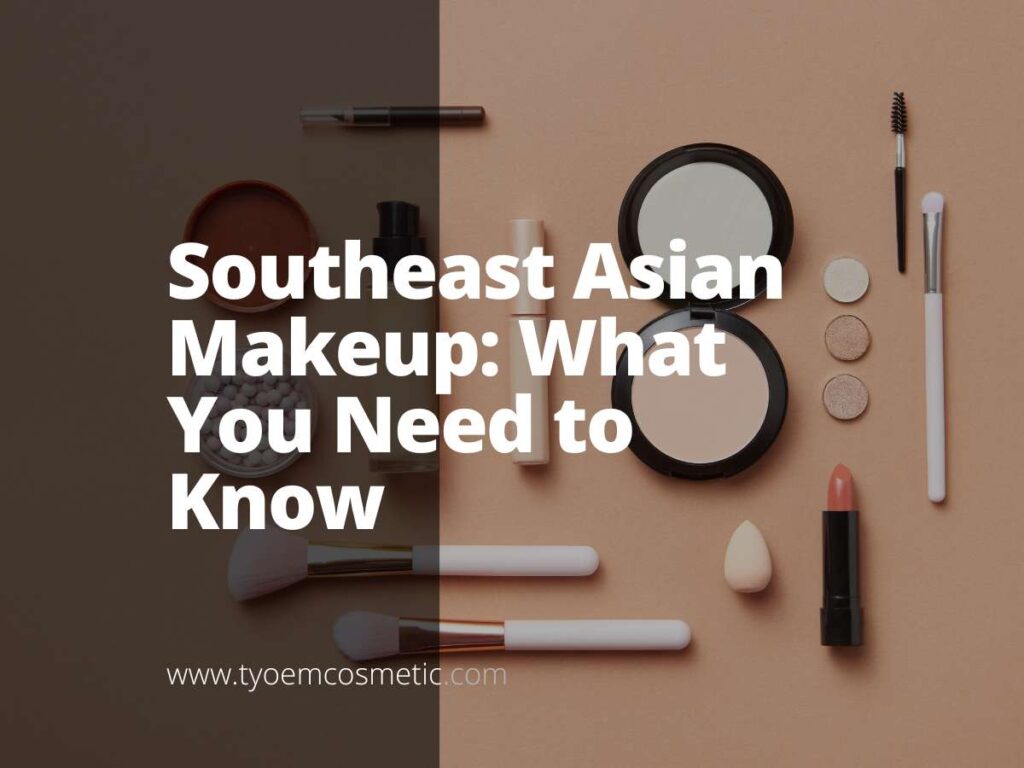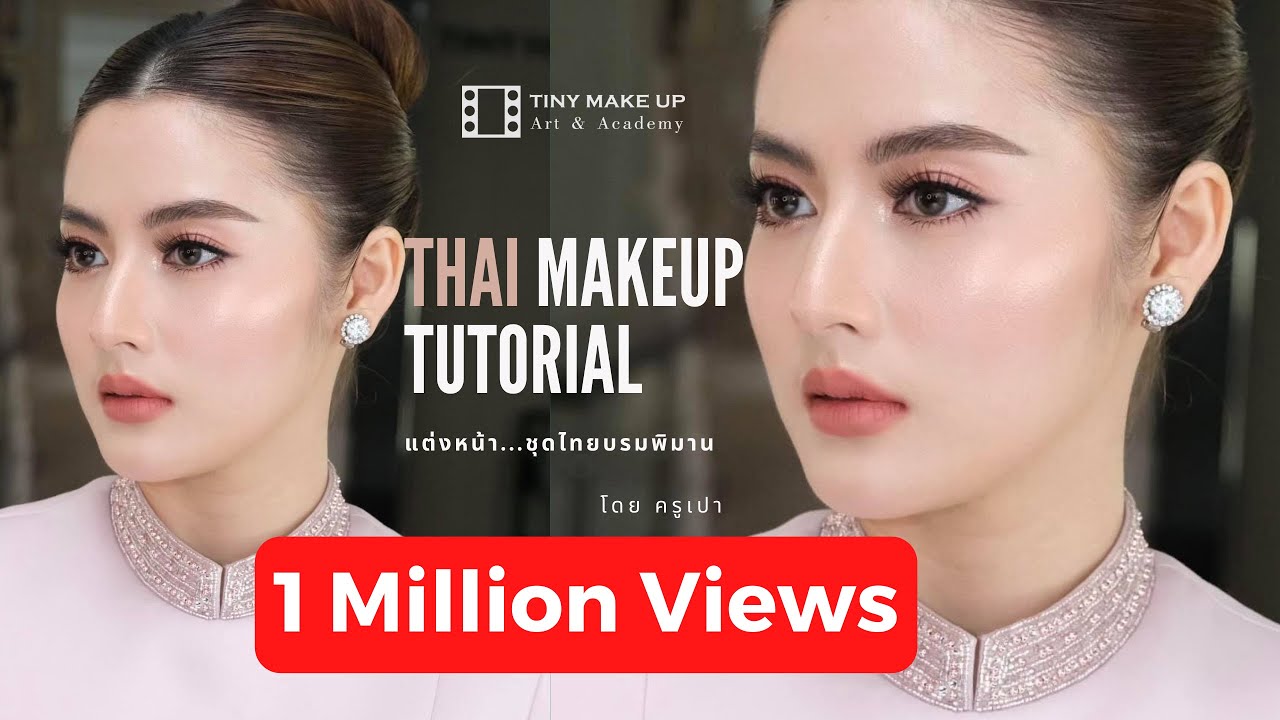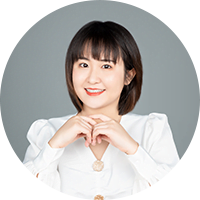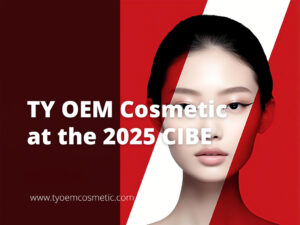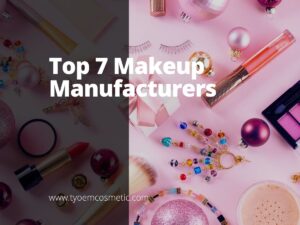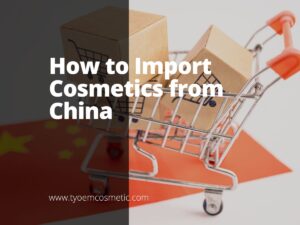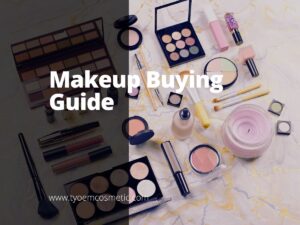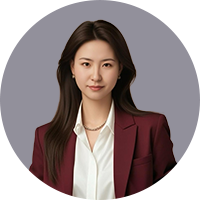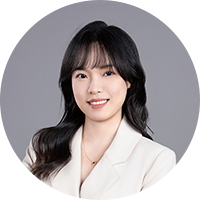The first time I tested a Western-formulated foundation on a client in Manila, it slid right off by noon.
The shade looked right under store lights. But under the sun, in the city’s humid heat? It turned gray and patchy.
That day, I called a local chemist. We spent weeks testing ingredients, tweaking textures, and listening to what women actually wanted in their makeup.
Since then, we’ve helped over 40 product lines adapt for Southeast Asia, across Indonesia, Thailand, Vietnam, and beyond. We’ve worked directly with labs, salons, and small founders trying to get it right.
We know what melts. What oxidizes. What customers reject with just one swatch.
In this article, you’ll learn what truly works for Southeast Asian makeup. We’ll walk you through beauty preferences, common skin tones, how climate affects wear, and what styles are trending right now.
By the end, you’ll have the tools to build better products or services, ones your customers actually trust and wear.
1. Traditional Makeup Styles Across Southeast Asia
Before beauty became a trend, it was a tradition. And here in Southeast Asia, those traditions still live on, in ceremonies, weddings, and daily life.
If you’re building a skincare or cosmetics brand for this region, this history isn’t optional. It’s part of the conversation.
These traditional styles help people feel connected, to their families, their culture, and their values. When you look closely, you’ll see that many buyers still carry pieces of these looks into their modern routines.
Thailand
In Thailand, traditional makeup highlights calm strength and elegance.
You’ll often see smooth, pale skin with a slight glow. Eyes are shaped with dark liner and lifted at the corners. Lips are usually deep red or soft pink, shaped with precision.
These styles show up in classical dance, royal events, and temple ceremonies.
Indonesia
Indonesia has rich traditions that vary across its islands, but one thing stands out, ceremony.
In Javanese weddings, makeup is deep and expressive. Eyes are long and bold, brows are shaped with care, and the skin has a rich finish. Red lips add balance.
Each feature is chosen with purpose. It’s not about trend. It’s about honoring the moment.
Philippines
Filipino beauty traditions are subtle and graceful.
During traditional dances and celebrations, you’ll often see lightly powdered skin, thin brows, soft lip tints, and a natural flush. Simplicity is part of the appeal, it’s meant to reflect purity and inner strength. The Spanish and indigenous influences both show through in these styles.
Myanmar
In Myanmar, traditional makeup includes thanaka, a paste made from ground tree bark.
It’s applied in circles or leaf shapes on the cheeks and nose. It cools the skin, protects it from the sun, and connects the person to their roots. It’s used daily, not just for special events. Many people still wear it today, blending the old with the new.
Vietnam
Vietnamese makeup in the past leaned toward balance and harmony.
For special events, women wore light foundations, soft red lips, and smooth brows. It was all about refinement, not boldness. This quiet elegance still influences modern Vietnamese beauty standards.
2. Modern Makeup Trends in Southeast Asia
In the early days of my business, I launched a matte foundation line based on what I saw trending globally. It had strong coverage, a flat finish, and did great in other markets.
But in Southeast Asia, it didn’t land. Customers told me it felt too heavy, too dry, especially in humid weather. That’s when I knew I needed to pay closer attention, not to what was trending everywhere, but to what made sense here. Since then, I’ve been watching what’s actually happening on the ground.
Today’s Trends
Across the region, modern makeup trends are shaped by how people live, what they feel confident wearing, and what makes them feel seen. Here’s what stands out:
- Lighter coverage is in. BB creams, tinted moisturizers, and sheer foundations are taking the lead.
- Glossy finishes are preferred over matte, especially for lips and cheeks.
- Cream formulas are more popular than powders. They blend better and feel more natural on the skin.
- Warm tones, like coral, rose, peach, and bronze, are widely loved. They suit the climate and skin tones here.
- Flexible use matters. Products that can do more than one thing, like lip-and-cheek tints, tend to sell faster.
These aren’t just preferences. They’re habits. Once you understand them, you can design products that people actually reach for.
Skin Still Comes First
One thing I’ve noticed over and over again, people here care more about healthy skin than a full face of makeup.
Even makeup buyers are choosing products that feel like skincare. They want hydration, protection, and glow. Many of them skip foundation completely on most days. So if your product feels too thick or too dry, it may not get a second look.
Eyes and Brows
In this market, eye makeup has shifted.
Buyers lean toward soft browns, oranges, and rose tones. The goal is to shape, not to overpower. Even with liner, most are going for a soft flick, not a bold wing.
Brow gels, tint pens, and shaping tools are in demand. Full, fluffy brows feel more real to the customer than drawn-on arches.
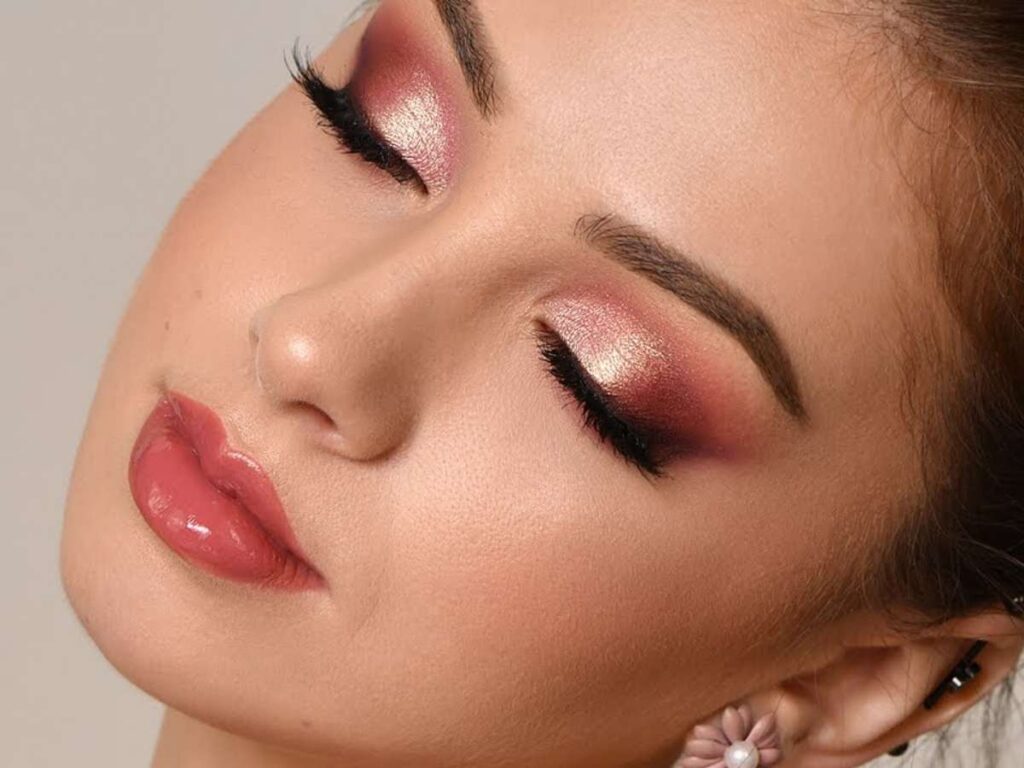
3. Key Features of Southeast Asian Makeup Looks
By now, you’ve seen that beauty here follows its own rhythm. It’s shaped by culture, climate, skin tone, and lifestyle.
But what does a typical makeup look like? What are people aiming for? Let’s break it down clearly, so you can shape your products and visuals with intention.
Skin Finish
Skin is the starting point of most looks.
Buyers across Southeast Asia prefer a healthy, breathable base. Full coverage is used sparingly, mostly for events. For daily wear, the goal is to even out tone without hiding the skin.
You’ll often see:
- Sheer foundations, BB creams, or tinted moisturizers
- Dewy or semi-glow finishes that reflect natural light
- Minimal powder, used only on oily spots, if at all
In humid weather, thick makeup can feel uncomfortable. Lightweight formulas that don’t clog or cake are much more welcome.
Color Choices
Color selection isn’t just a matter of taste, it’s deeply connected to how makeup interacts with the skin. In Southeast Asia, warm and neutral undertones are the most common, which means certain colors simply work better than others.
To help you design better products, we’ve broken down common shade preferences by category:
| Product Type | Preferred Tones | Why It Works | Commonly Avoided |
| Blush | Peach, coral, soft rose, terracotta | These shades mimic a natural flush and blend easily with golden and olive skin. They give warmth without looking too stark. | Cool pinks, lavender, icy tones |
| Lip Color | Brick red, burnt orange, rose brown, warm nude, berry | These tones echo natural lip color and give depth without clashing. They hold up well in heat and daily wear. | Pale nude, blue-toned red, fuchsia |
| Eyeshadow | Warm brown, copper, gold, taupe, rose gold | These tones flatter monolids and deeper creases alike. They add depth without overwhelming the eye shape. | Icy silver, frosty blue, heavy black |
| Highlighter | Champagne, soft gold, warm peach | These add glow without making the skin look gray or chalky. Especially effective on medium to tan tones. | White, pink-toned highlighters |
| Foundation/Base | Golden, neutral, olive | These match better with common undertones in the region and help avoid a gray cast. | Pink-beige or overly pale tones |
Lips
Lips give the look its final touch. Gradient lips, where color fades from the center, are still popular, especially among younger buyers. Others go for soft glosses or lightweight tints that add moisture and a touch of color.
Here’s what works well:
- Lip tints with a watery or gel base
- Soft matte lipsticks with blurring effects
- Glosses with a hint of shimmer or peachy tone
- Shades that reflect natural lip color, just a bit deeper
Formulas that feel comfortable and last through the day (especially in the heat) are high on the list.
4. Best-Selling Makeup Products in Southeast Asia
If you want to grow in this market, pay close attention to what’s already working. Best-selling products don’t just show what people like, they reveal what they use, repurchase, and recommend.
I used to think product quality alone was enough. But what I’ve learned is that fit for skin, lifestyle, and weather matters just as much.
Below are the categories and product types that consistently sell across Southeast Asia, based on consumer behavior, retailer trends, and feedback from the ground.
Lip Tints and Lip Creams
Lip tints are everywhere, from local drugstores to online shops.
They’re lightweight, long-lasting, and often double as cheek color. Buyers love them because they’re easy to use and hold up in heat and humidity. What sells best:
- Watery and gel-based tints with buildable color
- Blurring lip creams that give a soft-matte finish without drying
- Warm reds, brick tones, peachy browns
Price matters here too. Affordable, mid-range products move faster than premium ones unless backed by strong local demand or influencer trust.
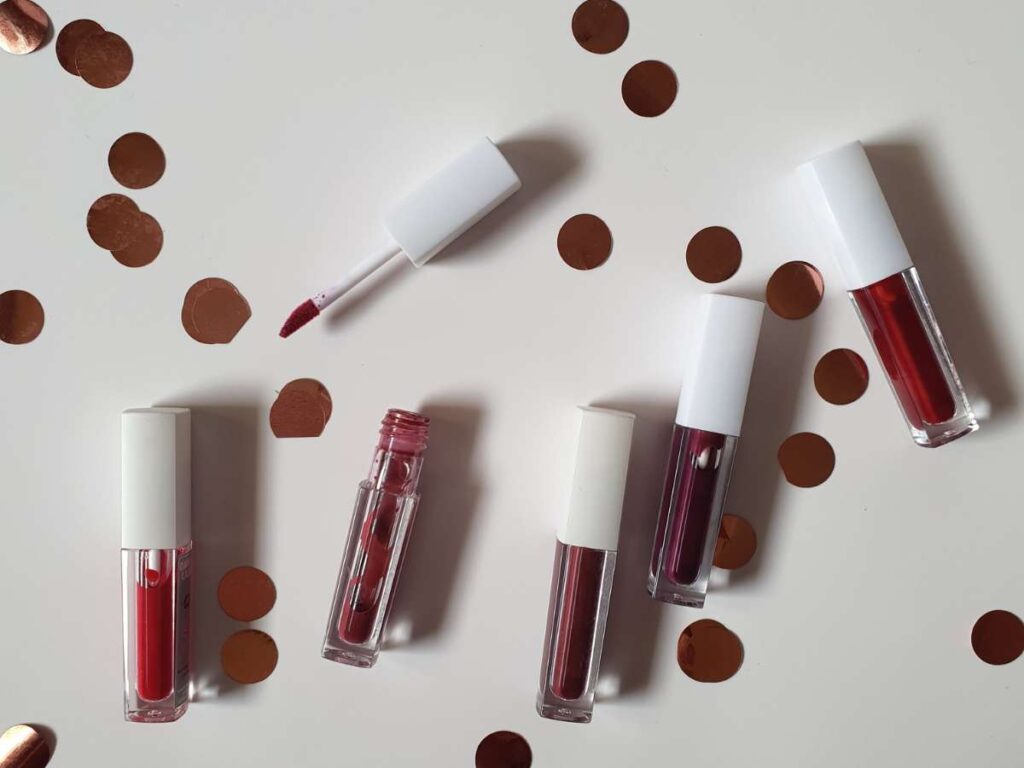
Tinted Moisturizers and BB Creams
Foundation still sells, but more buyers now prefer something lighter.
Tinted moisturizers and BB creams are go-to items for daily wear. They even out the skin without feeling heavy, and many include SPF or skin care benefits. What sells best:
- Sheer to medium coverage that lets skin show through
- SPF 30 or higher built into the formula
- Golden or neutral undertone shades
Local buyers often avoid thick foundations unless it’s for bridal or professional makeup.
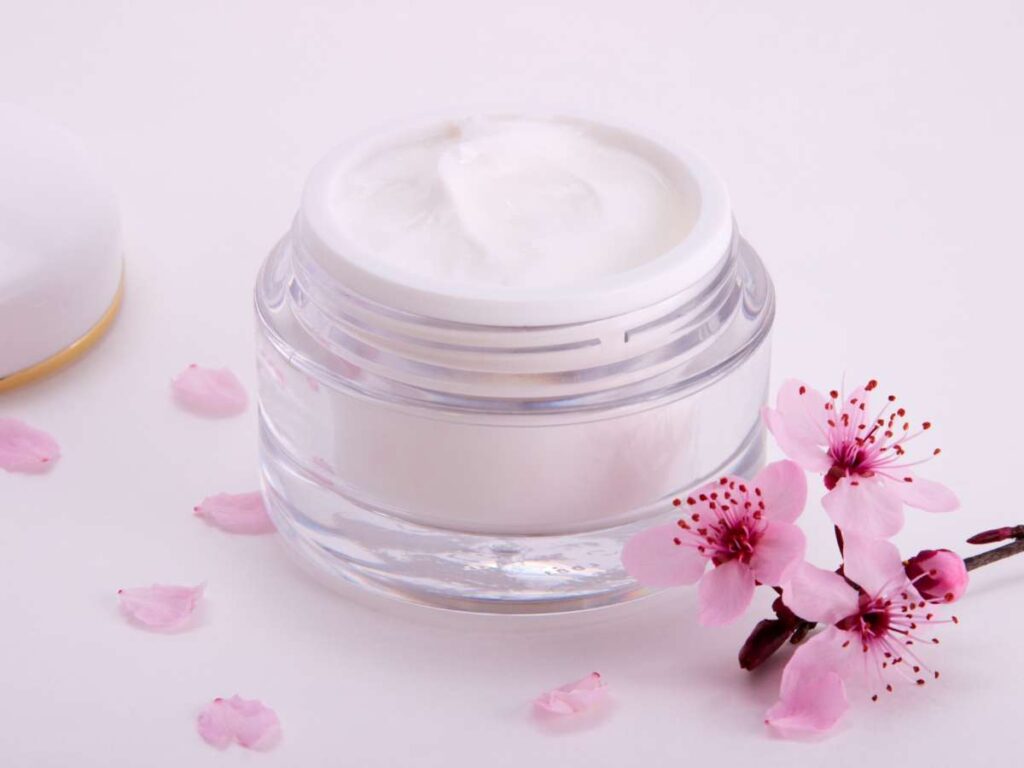
Brow Gels and Shaping Pens
Eyebrows frame the face, and in Southeast Asia, the trend is full, lifted, and natural. Instead of pencils or powders, more people now use brow gels or flexible shaping pens.
What sells best:
- Clear or tinted brow gels with a firm hold
- Soft-tip pens that mimic hair strokes
- Products with long wear and water resistance
Buyers prefer tools that are fast, precise, and don’t smudge in the heat.
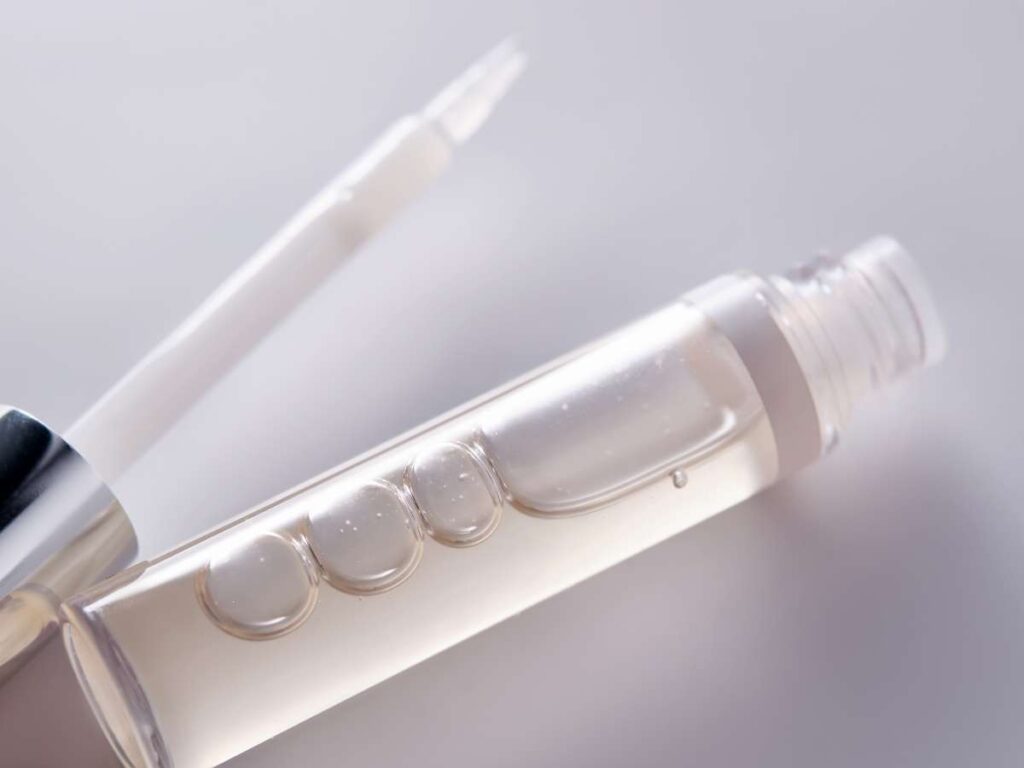
Cream and Liquid Blushes
Powder blush is still used, but cream and liquid forms are growing faster. They blend into the skin better and give a more natural finish, which matches local style preferences.
What sells best:
- Multi-use tints for lips and cheeks
- Cream blush in stick or pot form
- Shades like coral, warm rose, soft terracotta
Products that offer color without stickiness tend to get better reviews.
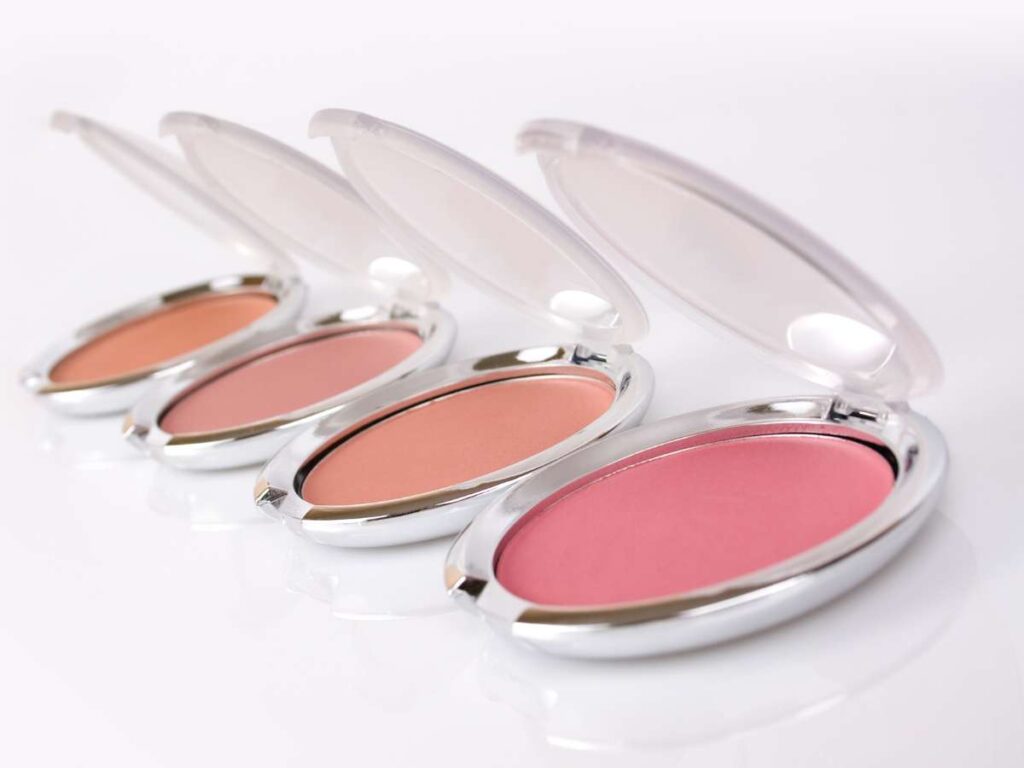
Lightweight Setting Products
Setting is still part of the routine, but the focus is on controlling shine without losing glow.
What sells best:
- Fine mist sprays that are set without drying
- Translucent loose powder for oil control
- Blotting powders for mid-day touch-ups
Buyers want to stay fresh not flat. Matte powders that leave a white cast often get returned or left unused.

Eyeshadow Palettes (Soft Neutrals)
Smaller palettes with warm, soft shades tend to perform better than large, colorful sets.
What sells best:
- 4–6 shade palettes with practical everyday tones
- Brown, rose, peach, and gold shades
- Soft shimmer finishes over full glitter
Most buyers here want eyeshadow that’s wearable, not experimental.
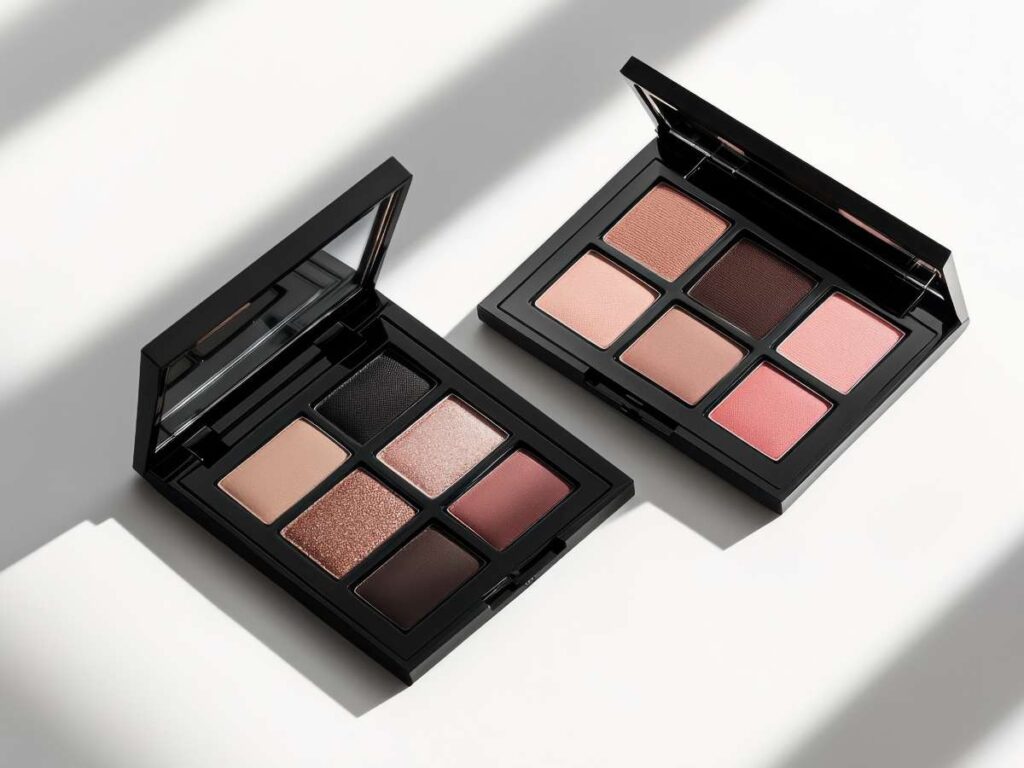
5. Challenges and Opportunities in the Southeast Asian Makeup Industry
Selling makeup in Southeast Asia is exciting, but it’s not simple. There’s fast growth, rising demand, and more access than ever. But there are also gaps, limits, and hard lessons if you’re not prepared.
I’ve seen both sides.
There were times I couldn’t keep up with demand. And other times when new launches failed because I missed what the market needed.
Here’s what you should know before scaling your beauty brand in this region:
Challenges
- Climate and Product Compatibility: The hot, humid weather affects what people buy and how they wear it. Thick foundations melt. Dry matte products crack. If your formula can’t handle sweat, oil, or frequent touch-ups, it won’t last long in someone’s routine.
- Shade Range Limitations: Many global brands still release shades that don’t work for Southeast Asian skin tones. If your lineup skips golden, olive, or deeper shades, buyers notice. And they often turn to local alternatives instead.
- Distribution and Logistics: Shipping delays, customs fees, and uneven supply chains can slow growth. Smaller brands may also struggle with stocking across multiple countries.
- Price Sensitivity: In many Southeast Asian markets, price plays a big role in purchase decisions. If your product costs too much without clear value, it may sit unsold.
Opportunities
- Local Influence Is Growing: You don’t need a celebrity ambassador. A mid-level local influencer with strong engagement can drive real results, especially in places like the Philippines, Indonesia, and Vietnam.
- Online Shopping Keeps Expanding: More buyers now discover and buy products through social media, e-commerce, and mobile apps.
- Skin-Inclusive Brands Are Standing Out: When you offer the right shades, textures, and values, without copying global trends, you give people something made with them in mind.
6. The Future of Southeast Asian Makeup
What’s next for makeup in Southeast Asia? The answer isn’t just in trend forecasts. It’s in how people live, what they care about, and how they express themselves through beauty.
I’ve seen the shift over time, from bold, Western-style looks to softer, skin-focused routines that reflect both tradition and modern life. And that shift hasn’t stopped. It’s still moving.
As a business owner, you don’t just want to keep up. You want to be ready.
Beauty With Purpose
Clean beauty, gentle formulas, and transparent ingredients are gaining ground. Not just because it’s a trend, but because it feels better. Buyers are avoiding harsh formulas and asking for options that support their skin over time.
More Diverse Shade and Texture Needs
Skin tones across the region are wide and varied, and buyers want to see that reflected. At TY Cosmetic, we include more undertones, more finishes, and a better range will stand out. That includes:
- Golden and olive shades in light to deep ranges
- Foundations that work in humidity
- Lip and cheek products that show up on different tones
Shoppers are ready to support brands that see them.
Beauty That Fits Real Life
Lifestyle continues to shape makeup choices. People want beauty that:
- Saves time
- Feels comfortable all day
- Translates from day to night
That’s why multi-use sticks, soft-focus tints, and skin-friendly products are rising. The more adaptable the product, the more likely it is to become a daily essential.
Homegrown Brands Are Rising
Local brands are no longer just the alternative, they’re leading. They understand the climate, the culture, the skin tones, and the language. They’re faster, closer to the buyer, and often more trusted.
As this continues, expect to see stronger loyalty to brands that are built from the inside out, not just imported in.
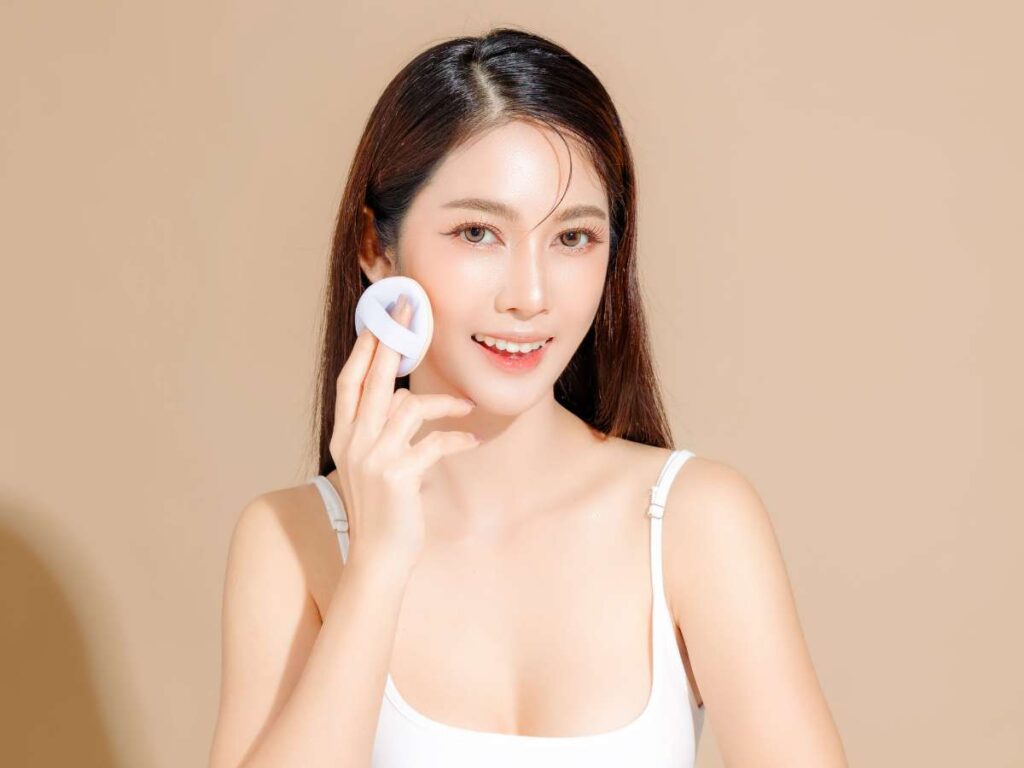
Conclusion
We started with a product that melted. We ended with one that stayed all day.
This article gave you the key tools: what Southeast Asian makeup looks like, how to build it, and why it matters. From skin tone to weather, culture to trend, these things shape what works.
And now, you’re ready to make something better.
TY Cosmetic has helped brands do just that for years. We know the market, because we’ve been in it, with our hands, not just our words.
Let’s make your next product stick.
Contact us today. We’re ready when you are.
Recommended Reads for You
If you enjoyed this read, here are a few more articles packed with helpful information:
Regional Cosmetic Manufacturers
- Top 7 Cosmetics Manufacturers In Malaysia
- Top 7 Makeup Manufacturers in the Philippines
- Top 7 Cosmetic Manufacturer in Thailand
- Top 7 Cosmetic Manufacturers in Indonesia
- Top 8 Colour Cosmetic Manufacturers
Indonesia Market Focus
Still haven’t found what you’re looking for? Don’t hesitate to contact us. We’re available around the clock to assist you.
